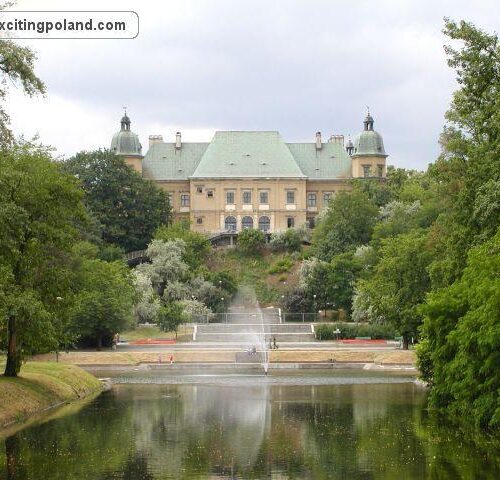Warsaw
A city resounding with life, young in heart, a mix of old and new, where historic huses face modern buildings and commercial centers. This verdant city, with abundant greenery of parks and gardens, was rebuilt after WWII. An important university center. The Old Town (historic center of the city) has been inscribed on the UNESCO’s list of world heritage. Mermaid – the emblem of Warsaw, featured on the city’s coat-ofarms Old Town Square, ul. Wybrzeże Kościuszkowskie.
Royal Castle
Old residence of the dukes of Mazovia and Polish kings, totally destroyed during WWII and meticulously rebuilt.
Sigismundus Column
A meeting point of young people and emblem of Warsaw.
Castle Square Old Town Square
surrounded with tenement houses from the 15th to 18th century, rebuilt after destructions of WWII.
St. John’s Cathedral
the crypts with tombs and sarcophagae of prominent Poles are open to visitors.
Barbican
this imposing structure from the 16th century and the partly preserved ramparts marked the boundary of New and Old Town. Today it is hosting a summer gallery of paintings and performances by street musicians.
New Town Square
A charming asymmetric square of varying level, with St. Casimir’s Church belonging to the convent of Holy Sacrament Sisters.
St. Anne’s Church
A view tower and student ministry center.
Krakowskie Przedmieście
The opening street of so-called Royal Route. Two renowned Polish higher schools: Warsaw University and Academy of Fine I have moved the capital from Cracow to Warsaw and now in remembrance I have to stand on this column Sigismundus Column Since 14th I have defended the residents of Warsaw in appreciation of their hospitality. Arts are located at Krakowskie Przedmieście.
Holy Cross Church
The hearts of Chopin and Władysław Reymont, laureate of Nobel Prize in Literature, are entombed in the pillars of the left nave ul. Krakowskie Przedmieście 3.
Piłsudskiego Square
The venue of national celebrations, the Tomb of the Unknown Soldier from 1925, where urns with soil from the battlefields of Polish soldiers during WWII are entombed. Polish soldiers guard the tomb, located near the Saxon Garden from the 18th century and a new Metropolitan office building designed by Sir Norman Foster.
Royal Baths (Łazienki)
A park of 76 hectares located in the center of the city, summer residence of the last king of Poland, is one of the most beautiful garden complexes in Europe.
Łazienki – Chopin’s Monument
set in the rose garden, at a pond; throughout the summer Chopin piano recitals are performed at the foot of this famous Polish monument. Wilanów The gateway to Royal Route, is located 6 km apart from the center of the city. Sightseeing: the Palace – summer residence of King Jan III Sobieski, the defeaterof Turks near Vienna, and a vast park. Poster Museum in Wilanów with a collection of Polish posters since 1892.
National Museum
with a gallery of ancient (frescos from Farras)and medieval art, Polish and European painting, Polish art of the 20th century and European decorative art.
Palace of Science and Culture
the most controversial building in Warsaw, erected in the 1950’ as a gift by the Soviet Union. Hosts several research and commercial establishments, museums, theatres and cinemas. A viewing platform on the 30th floor offers an expansive view over Warsaw and its surroundings.
Warsaw Worth Visiting Kordegarda
The Gallery of Art was founded in 1956. It is one of the finest collections in the world illustrating major achievements in painting, sculpture and decorative arts.
Gallery Zachęta
Zachęta National Gallery of Art is the oldest exhibition site in Warsaw, with a tradition stretching back to the mid 19th Century. It is located in the heart of Warsaw, next to the Saski Park, and in the immediate vicinity of the University of Warsaw and the Academy of the Fine Arts.
Galery Koło Market
A flea market. Old furniture, paintings and icons, china and other gadgets are offered.
BUW
New building of Warsaw University Library, with rooftop gardens and a splendid view over Vistula River.









 credit card payments
credit card payments